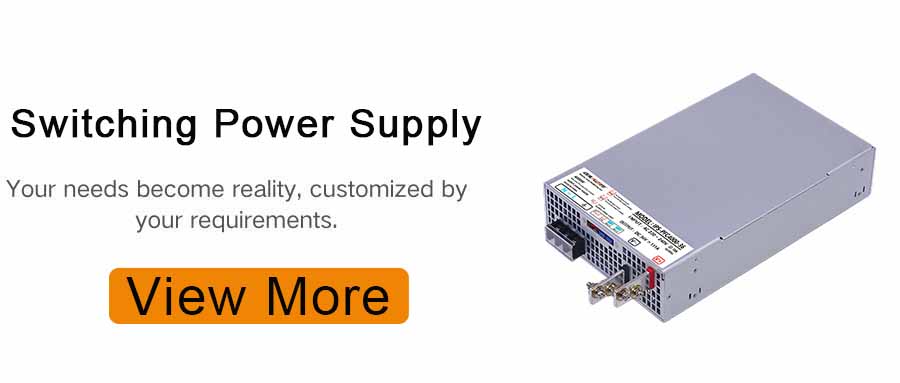Switching power supplies, as high-efficiency, high-performance power supplies, have been widely used in various electronic products. However, switching power supplies generate a certain amount of ripple during power supply operation. While this ripple does not directly affect electronic devices, it cannot be completely ignored for sensitive electronic equipment. Therefore, reducing ripple in switching power supplies has become a critical issue.
So, how can switching power supply ripple be reduced? The following details three methods for reducing ripple in switching power supplies: filtering, modulation, and control.
Filtering Technology
Filtering technology is one of the most commonly used methods for reducing ripple in switching power supplies. By connecting a filter capacitor and a filter inductor in series at the output of a switching power supply, high-frequency ripple at the output can be effectively filtered out. There are several key aspects of filtering technology that require attention:
1. Selecting the appropriate filter capacitor and inductor
Selecting the appropriate filter capacitor and inductor is the core of filtering technology. Generally speaking, the filter capacitor should have sufficient capacitance to allow for efficient charging and discharging, thereby minimizing ripple. The filter inductor should have sufficient inductance to generate a reverse electromotive force when the output current changes, thereby eliminating ripple.
2. Optimizing the Filter Circuit
In a filter circuit, the arrangement and connection of the filter capacitors and inductors affect the filtering effect. Therefore, the filter circuit needs to be optimized to minimize ripple.
3. Evaluating Filtering Effectiveness
Finally, we need to evaluate the filtering effect to ensure that the ripple at the output of the switching power supply is effectively controlled.
Modulation Techniques
Modulation techniques are another common method for reducing ripple in switching power supplies. Typically, a PWM modulator is used to generate a controllable ripple at the output. The frequency of this ripple should be higher than the cutoff frequency of the ripple filter. This allows the filter to eliminate all ripple, including that generated by the modulator. The following aspects of modulation techniques require attention:
1. Choosing the Appropriate Modulation Frequency
The modulation frequency should be high enough for the filter to effectively filter the ripple. Furthermore, the modulation frequency should not be too high, otherwise it will result in excessive power consumption and EMI interference.
2. Optimizing the PWM Modulator
Optimizing the PWM modulator can improve modulation accuracy and efficiency, thereby achieving better ripple reduction.
3. Evaluating the Modulation Effect
Finally, the modulation effect needs to be evaluated to ensure that the switching power supply's ripple filtering is effectively controlled.
Control Technology
Control technology is a relatively novel method that reduces ripple by changing the switching power supply's operating mode. This technology requires the use of advanced control algorithms to modify parameters such as the switching frequency and duty cycle to reduce output ripple. The following aspects of control technology require attention:
1. Switching Frequency Control
Switching frequency control changes the operating frequency of the switching power supply, thereby adjusting the output current and voltage under different operating conditions. This technology typically requires advanced control algorithms and a high-precision digital controller.
2. Switching Duty Cycle Control
Switching duty cycle control changes the switching duty cycle of the switching power supply to adjust the output current and voltage. This technology requires complex control algorithms, such as PID controllers, and requires a high-precision digital controller.
3. Evaluating the Control Effect
Finally, the control effect needs to be evaluated to ensure that the switching power supply's ripple filtering is effectively controlled.
Summary
Reducing ripple in switching power supplies is a relatively complex problem, requiring multiple approaches and technical approaches. By combining filtering, modulation, and control technologies, we can effectively reduce ripple at the output of switching power supplies, thereby ensuring stable and reliable operation of electronic equipment.
IDEALPLUISNG Power Expert:
We focus on the research and development, sales and services in the fields of DC-DC power modules, AC-DC rectifier modules, DC-AC inverters, AC power supplies, DC power supplies, LED power supplies, chargers, rectifier systems, etc., providing personalized, efficient, reliable and cost-effective power solutions for all walks of life.
Thank you for considering our services.







